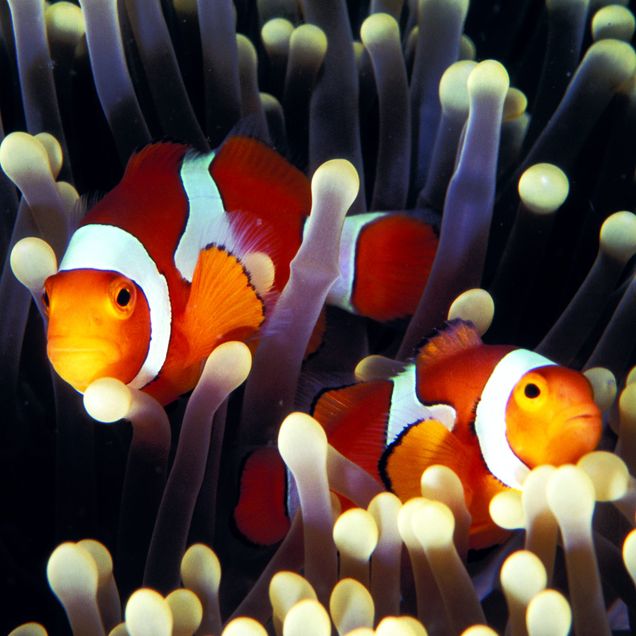Social Evolution in Clown Anemonefish
 Our first line of research focuses on understanding the ecology and evolution of non-breeding and helping strategies. Such strategies are seen in cooperatively breeding birds, mammals and eusocial insects and they have been of interest to evolutionary biologists ever since Darwin pointed out the difficulties that they posed for his theory of natural selection. We have conducted some of the first investigations of non-breeding strategies in marine fishes: the anemonefish Amphiprion percula, in Papua New Guinea. We have demonstrated that non-breeders tolerate their situation because they will inherit territories in the future and there are strong ecological and social constraints. Our work illustrates the importance of understanding future benefits and hidden threats if we are to understand the behavior of individuals in animal societies.
Our first line of research focuses on understanding the ecology and evolution of non-breeding and helping strategies. Such strategies are seen in cooperatively breeding birds, mammals and eusocial insects and they have been of interest to evolutionary biologists ever since Darwin pointed out the difficulties that they posed for his theory of natural selection. We have conducted some of the first investigations of non-breeding strategies in marine fishes: the anemonefish Amphiprion percula, in Papua New Guinea. We have demonstrated that non-breeders tolerate their situation because they will inherit territories in the future and there are strong ecological and social constraints. Our work illustrates the importance of understanding future benefits and hidden threats if we are to understand the behavior of individuals in animal societies.
Relevant Publications
Reed, C. U, Branconi, R. D, Majoris, J. P, Johnson, C. & Buston, P. (2019) Competitive growth in a social fish. Royal Society, Biology Letters 15: 20180737.
Rueger, T. P, Barbasch, T. D, Wong, M. Y. L., Srinivasan, M., Jones, G. P. & Buston, P. M. (2018) Reproductive control via the threat of eviction in the clown anemonefish. Proceedings of the Royal Society of London, Series B 285: 20181295.
Wong, M. Y. L. P, Uppaluri, C. U, Medina, A. U, Seymour, J M. & Buston, P. M. (2016) The four elements of within group conflict in animal societies: an experimental test using the clownfish. Behavioral Ecology and Sociobiology 70: 1467-1475.
Buston, P. M. & Zink, A. G. (2009) Reproductive skew and the evolution of conflict resolution: a synthesis of transactional and tug-of-war models. Behavioral Ecology 20: 672-684. (Cover photo).
Buston, P. M., Reeve, H. K., Cant, M. A., Vehrencamp, S. L. & Emlen, S. T. (2007) Reproductive skew and the evolution of group dissolution tactics: a synthesis of concession and restraint models. Animal Behaviour 74: 1643-1654.
Buston, P. M., Bogdanowicz, S. M., Wong, A. & Harrison, R. G. (2007) Are clownfish groups composed of relatives? Analysis of microsatellite DNA variation in Amphiprion percula. Molecular ecology 16: 3671-3678. (Cover photo).
Buston, P. M. (2004) Does the presence of non-breeders enhance the fitness of breeders? An experimental analysis in the clown anemonefish Amphiprion percula. Behavioural Ecology and Sociobiology 57: 23-31.
Buston, P. M. (2004) Territory inheritance in the clown anemonefish. Proceedings of the Royal Society of London, Series B 271: S252-S254.
Buston, P. M. (2003) Forcible eviction and prevention of recruitment in the clown anemonefish. Behavioral Ecology 14: 576-582.
Buston, P. M. (2003) Size and growth modification in clownfish. Nature 424: 145-146.